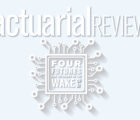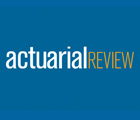 Ethical Issues is written by members of the CAS Committee on Professionalism Education (COPE). The column’s intent is to stimulate discussion among CAS members. Therefore, positions are sometimes stated in such a way as to provoke reactions and thoughtful responses on the part of the reader. The opinions expressed by readers and authors are for discussion purposes only and should not be used to prejudge the disposition of any actual case and do not modify published professional standards as they may apply in real-life situations.
Ethical Issues is written by members of the CAS Committee on Professionalism Education (COPE). The column’s intent is to stimulate discussion among CAS members. Therefore, positions are sometimes stated in such a way as to provoke reactions and thoughtful responses on the part of the reader. The opinions expressed by readers and authors are for discussion purposes only and should not be used to prejudge the disposition of any actual case and do not modify published professional standards as they may apply in real-life situations.
“Let’s start at the very beginning.
A very good place to start.”
—Oscar Hammerstein and
Richard Rodgers
The author was instructed that the text of this article should be between 1,400 and 2,000 words. ASOP 1 does not contain that many words in total, which would make the following not a “summary,” but an “expansion.” Two notes on this: a) This is a lie, ASOP 1 contains over 2,500 words, and b) this diversion counts as 66 words toward the minimum.
Any CAS member who has attended a professionalism session sponsored by the Professionalism Education Committee (COPE) will know that COPE focuses much of its content on the Actuarial Standards of Practice (ASOPs), which are promulgated by the Actuarial Standards Board (ASB). The ASOPs, along with the CAS Code of Conduct (Code) are the professionalism documents to which we mainly refer both in presentations and in the Course on Professionalism.
ASOP 1 is the “Introductory Actuarial Standard of Practice.” Do not let the name deceive you. Do not think of it as you would to the “introduction” or “preface” of a book which you may very well skip over to begin your reading. Here’s a test: Did you read the “Introduction” above for this article? To emphasize that point, in 2004, the ASB recognized the importance of the content of what was previously the Preface to the ASOPs and created the initial “Introductory Actuarial Standard of Practice.” In March 2013, the “Introductory ASOP” was designated as “ASOP 1” “to reinforce that the Introductory ASOP contains guidance” and, as such, was similar to all other ASOPs. The previous ASOP 1, “Nonguaranteed Charges or Benefits for Life Insurance Policies and Annuity Contracts” (yawn!), was renumbered as ASOP 2.
ASOP 1 is indeed an ASOP in and of itself. It is an ASOP about ASOPs. A “meta-ASOP,” you might say.
Just as with all other ASOPs, ASOP 1 is presented in four sections. For ASOPs that follow ASOP 1, the four sections are standardized. Appendix 1 of ASOP 1 lists these four sections. Each section and Appendix 1 will be discussed individually in the following paragraphs. Direct quotes from ASOP 1 will be presented throughout, especially when discussing the critical points made in the ASOP Standard. At the beginning of the discussion of each section, a quote taken directly from that section will be highlighted. These quotes capture the essence of why this Introductory ASOP is the most important ASOP.
This review, while comprehensive, is not meant as a substitute for reading and studying ASOP 1. That task is up to the individual practitioner. However, reading this article might qualify as professional continuing education (CE) hours.
Section 1. Overview
“ASOPs are binding on members of the U.S.-based actuarial organizations when rendering actuarial services in the U.S.”
While the ASOPs that follow ASOP 1 address specific topics or activities performed by the actuary, ASOP 1 “sets forth principles that have been broadly applicable to the work of the ASB since its inception, and it carries the same weight and authority as other ASOPs.”
The subsequent ASOPs instruct what the actuary “should” or “can” do and what the actuary “should consider” doing. ASOP 1 provides the “teeth” behind what happens if the actuary “doesn’t,” “cannot” or “doesn’t consider.” In Section 1, the teeth begin to get bared by the quotation at the beginning of this section. The text goes on to offer the caveat that ASOPs “are not the only considerations that affect an actuary’s work.” Additional considerations such as legal or regulatory requirements, requirements of the employer or an actuarial association, or even the actuary’s professional judgment may also play a part in the actuary’s work and conclusions. As such, “the ASOPs provide a basic framework that is intended to accommodate these additional considerations.”
Section 2. Definitions, Discussions, and Related Guidance
“Failure to follow a course of action denoted by either the term ‘must’ or ‘should’ constitutes a deviation from the guidance of the ASOP.”
Section 2 of ASOP 1, just as Section 2 of all the subsequent ASOPs (more on that later) contains definitions of words or terms that are used in that ASOP. A key difference for definitions in ASOP 1 is that the definition of words and terms in this Introductory ASOP are intended to be applicable to every ASOP, unless defined differently in a specific ASOP. In all other ASOPs, definitions presented in Section 2 are only for use in that specific ASOP. This is explained in ASOP 1 as “definitions can and do differ among ASOPs, reflecting different uses of language in various segments of the profession.”
Not every important term is defined within the ASOPs. In such cases, “the actuary is expected to interpret a term in a straight-forward manner, consistent with the common usage of the term.” This is essentially another application of actuarial judgment. Any questions about the meaning of a specific term should be directed to the Actuarial Board for Counseling and Discipline (ABCD).
Among the terms that are specifically defined in ASOP 1 are the “Terms of Construction”: “Must,” “Should” and “May.” As expected, each of these terms have specific definitions, and imply certain levels of responsibility and potential implications for the actuary who does not follow the guidance suggested by these terms, as they are presented in any ASOP.
Must — “As used in the ASOPs means that the ASB does not anticipate that the actuary will have any reasonable alternative but to follow a particular course of action.”
Should — “Indicates what is normally the appropriate practice for an actuary to follow when rendering actuarial services.”
The actuary may determine that for various reasons it is not “reasonable or practical” to follow the practice outlined as a “must” or “should” (please read the ASOP for more details on what may cause this conflict). All is not lost when the actuary deviates from the guidance of an ASOP. While “(f)ailure to follow a course of action denoted by either the term ‘must’ or ‘should’ constitutes a deviation from the guidance of the ASOP, the actuary in this instance should refer to ASOP 41, ‘Actuarial Communications.’” ASOP 41 gives the actuary a course to follow (including documentation, of course) in the event the actuary needs to deviate from the instructions of any ASOP.
An example of a situation that is not a deviation regarding the instruction “should” is given in this subsection. The ASOP states that the actuary “should consider” a certain action or process. The standard does not say the actuary “should” perform that action or process. If after consideration, the actuary judges that such an action is not appropriate, the failure to take that action is not considered a “deviation” (which is defined in Sec. 2.4) from the standard.
May — “As used in the ASOPs means that the course of action described is one that would be considered reasonable and appropriate in many circumstances.”
Clearly less stringent than either “Must” or “Should,” “May” is used when a course of action may not be reasonable or appropriate in all circumstances. When “May” is used in an ASOP, it is not intended to indicate that alternate courses of action are considered impermissible.
As mentioned earlier, terms defined in ASOP 1 are terms that will have the same definition across all ASOPs. Other terms defined in Section 2 are:
- Actuarial Services
- Actuarial Soundness
- Deviation
- Known
- Materiality
- Practical or Practicable
- Principal
- Professional Judgment
- Reasonable
- Reliance
- Significance/Significant
For discussion of these important terms, please refer to ASOP 1.
Section 3. Purpose and Format of Actuarial Standards of Practice
“ASOPs identify what should be considered, done, documented, and disclosed when rendering actuarial services.”
Section 3 addresses the purpose of the ASOPs by discussing what they are (and are not) intended to represent, in addition to what the ASOPs allow the actuary to do. Perhaps this section is best presented with a list.
According to ASOP 1, Section 3, the ASOPs:
→ Are intended for use by actuaries who are qualified to make use of them by virtue of having the necessary education and experience to understand and apply them (see Precept 2, Qualification Standards, of the Code). Other individuals should consider obtaining the advice of a qualified actuary before making use of, or otherwise relying upon, ASOPs.
→ Are intended to provide guidance for dealing with commonly encountered situations. Actuaries in professional practice may also have to handle new or non-routine situations not anticipated by the ASOPs.
→ Are principles-based and provide the actuary with an analytical framework for exercising professional judgment and identify factors that the actuary typically should consider when rendering a particular type of actuarial service.
Not all ASOPs will apply to all tasks. Most ASOPs are task-specific, and the actuary is responsible for determining which ASOPs do apply to the task at hand.
→ Allow for the actuary to use professional judgment when selecting methods and assumptions, conducting an analysis and reaching a conclusion, and recognize that actuaries can reasonably reach different conclusions when faced with the same facts.
→ Provide guidance (in) situations where the actuary deviates from the guidance of an ASOP, such as when applicable law supersedes the instructions of ASOPs.
The ASOPs are not:
→ Making an attempt to dictate every step and decision in an actuarial assignment.
→ Intended to shift the burden of proof or the burden of production during litigation, and deviation from one or more provisions of an ASOP should not, in and of itself, be presumed to be malpractice.
→ Meant to be narrowly prescriptive and neither dictate a single approach nor mandate a particular outcome.
Section 4. Compliance with ASOPs
“ASOPs are binding upon actuaries. Failure to comply with an applicable ASOP results in a breach of the Code.”
Section 4 of ASOP 1 begins with the quote directly above. The quote continues with “(s)uch breaches subject the actuary to the profession’s counseling and discipline processes,” which may lead to the involvement of the ABCD. This section discusses compliance with the ASOPs and their applicability to the specific situations. While the ASOPs are indeed binding, ASOP 1 states that “(a)ctuaries should take a good faith approach in complying with ASOPs, exercising good judgment and professional integrity.” On the other hand, it warns that it is not appropriate to make a “strained interpretation” of the ASOPs’ provisions.
Not all ASOPs will apply to all tasks. Most ASOPs are task-specific and the actuary is responsible for determining which ASOPs do apply to the task at hand. Further to this, the Applicability Guidelines can be found at https://www.actuary.org/content/applicability-guidelines-actuarial-standards-practice-0. If no ASOPs apply, the actuary may refer to the guidance in the related ASOPs but is not required to do so. If the actuary believes that the ASOPs have conflicting provisions and there is no clear hierarchy of which should apply, they should use professional judgment and may want to contact the ABCD for confidential guidance.
ASOP 1 fits into the rare category of ASOPs that apply more broadly to many different types of actuarial services. It is similar in this regard to ASOP 23 (Data Quality) and ASOP 41 (Actuarial Communications).
Most importantly, “[t]he ASOPs make specific provision for those situations where the actuary is required to or deems it appropriate to deviate from one or more provisions of an ASOP. It is not a breach of an ASOP to deviate from one or more of its provisions if the actuary does so in the manner described in the ASOP, including making the disclosures related to the deviation as required in such ASOP and in ASOP No. 41.”
Appendix 1
One item alluded to earlier in this article comes from Appendix 1 and concerns the organization of ASOPs. Except for ASOP 1, the four sections of each ASOP are standard:
- Section 1 discusses the scope, cross-references and effective date of the ASOP.
- Section 2 defines or discusses certain terms used within the ASOP.
- Section 3 provides an analysis of issues and recommended practices.
- Section 4 addresses communications and disclosures.
Conclusion
As you now know, the “Introductory Actuarial Standard of Practice” provides critical and essential information on the applicability of the ASOPs along with potential remedies to the actuary in the event the actuary deems it necessary to deviate from the guidance. The answer, in that case — as always — is “document, document, document” and “disclose, disclose, disclose.” The ASOPs are better understood and become more powerful once you are familiar with ASOP 1.











 For more information,
For more information, 